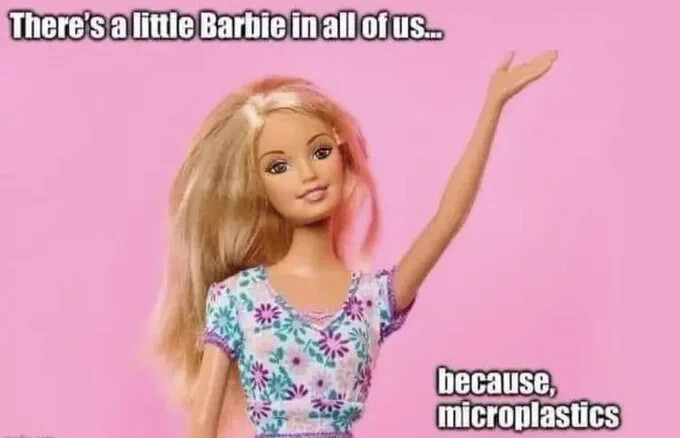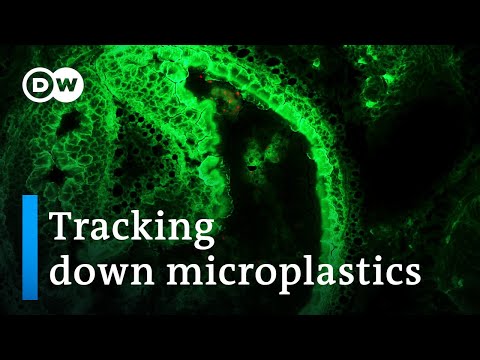The edgier microplastics are worse (water bottle or shirataki noodle microplastics…)
Sci Hub had trouble coming up with the paper for some reason. Acted like it had it, then it locked up.
So, a boatload of data about a boatload of plastic. What’s the fix?
Assessing the Release of Microplastics and Nanoplastics from Plastic Containers and Reusable Food Pouches: Implications for Human Health
This study investigated the release of microplastics and nanoplastics from plastic containers and reusable food pouches under different usage scenarios, using DI water and 3% acetic acid as food simulants for aqueous foods and acidic foods. The results indicated that microwave heating caused the highest release of microplastics and nanoplastics into food compared to other usage scenarios, such as refrigeration or room-temperature storage. It was found that some containers could release as many as 4.22 million microplastic and 2.11 billion nanoplastic particles from only one square centimeter of plastic area within 3 min of microwave heating. Refrigeration and room-temperature storage for over six months can also release millions to billions of microplastics and nanoplastics. Additionally, the polyethylene-based food pouch released more particles than polypropylene-based plastic containers. Exposure modeling results suggested that the highest estimated daily intake was 20.3 ng/kg·day for infants drinking microwaved water and 22.1 ng/kg·day for toddlers consuming microwaved dairy products from polypropylene containers. Furthermore, an in vitro study conducted to assess the cell viability showed that the extracted microplastics and nanoplastics released from the plastic container can cause the death of 76.70 and 77.18% of human embryonic kidney cells (HEK293T) at 1000 μg/mL concentration after exposure of 48 and 72 h, respectively.
Paywalled:
Slowly shorten your lifespan by cooking your food/beverages exposed to plastic.
And yet we are living longer and longer.
The longer life span is largely due to sanitation and medicines.
Plastics where introduced for profitable.
Locate and watch a documentary titled “Plastics Planet”
Of course. But then what does that say about the effects of micro plastics?
Air pollution and lead levels have been going down. But plastic waste rates only go up…and up… and up… (possibly exponentially…)
Given their growth curves with age in an increasing plasticized world, this is the kind of thing you don’t notice… until you’re old and they slowly choke your cells from the inside… and then it’s not almost impossible to get them out…
A bit funny. Worry about the microplastic, not the potato chips you’re eating.
Those potato chips are organic.
Sir David Attenborough has said that microplastics have been poisoning the ocean by making mother’s milk toxic to dolphins and whales. I’d assume what’s bad for our aquatic mammals has also got to be bad for us as well. Will it take human deaths from microplastic poisoning to get change implemented?
But right now we just don’t know what microplastics do to humans.
Very small particles are probably bad, and a lot can be mitigated in easy ways, for example an air purifier that reduces PM2.5 (does it decrease microplastics in the air too?), and not microwaving plastic containers, etc.
The Microplastic Crisis Is Getting Exponentially Worse
Exponential
It’s the most important word here. Exponential growth (like, doubling each 8 years).
They may not be a HUGE health threat yet, but imagine what they will be like in 16 years (and add the new numbers on top of all historical exposure)… Given that they get in the soils of food we grow…
Basically WALL-E but the trash is invisible, everywhere.
Is it mostly a problem for the oceans? According to an air purifier manufacturer there isn’t much in the air. I don’t know how much growth of microplastics in ocean translate to our food, either, etc.
The soil is the worst because that’s how it gets into our foods, wrapped in plastic or not, and people still don’t filter out them in wastewater before irrigating crops
https://www.sciencedirect.com/science/article/pii/S2352186422000724
Plus the soil is closer to sources of microplastics. Maybe its not as bad in the US as it is in the studies featured, since agricultural lands in the US are not close to densely populated land or river drainage basins
Its the shape of microplastics that matters way more than the composition (as long as it isn’t PVC or PS)… I’m way more concerned about microfibers from clothing than most others. If we could find a study about plastics that aren’t absorbed by the body, I would be more okay with accidentally consuming that kind of plastic - but these require studies first
invasive medical procedures introduce them…


